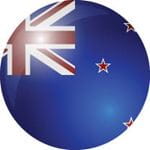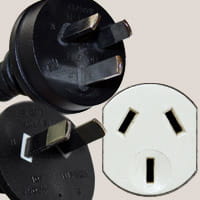
Capitalise on the market opportunities in New Zealand
Capitalise on the market opportunities in New Zealand
 Product safety requirements and regulations are put in place to reduce risks of injury, ensure safety during use and improve quality of life. Most products entering the New Zealand market must meet the relevant requirements of the authorities depending on the product scope.
Product safety requirements and regulations are put in place to reduce risks of injury, ensure safety during use and improve quality of life. Most products entering the New Zealand market must meet the relevant requirements of the authorities depending on the product scope.
These regulations and compliance requirements can however pose challenges to companies who are looking to explore new markets in New Zealand. You can ensure that your products successfully meet the New Zealand standards by working with a market leader, TÜV SÜD.
TÜV SÜD fully understands the local requirements and procedures applicable in New Zealand. You can rely on our expertise and knowledge to help you access key markets efficiently while at the same time, be assured of our objectivity, integrity and professionalism.
Type I

Electrical Regulatory Authorities Council (ERAC)
1. Identify the applicable labelling notice
2. Identify the applicable technical standards and the testing requirements
3. Demonstrate product compliance
4. Complete a Supplier Declaration of Conformity (SDoC) and maintain compliance records
5. Register as a “responsible supplier”
6. Label the product
A full list of high risk product may be found here.
A full list of medium risk product may be found here.
To determine if a particular product is subject to the above regulations, please contact us.
TÜV SÜD has the experience and capability to support manufacturers in attaining compliance with New Zealand's requirements and obtaining the necessary approval. TÜV SÜD can also perform required testing to applicable standards.
Energy Efficiency and Conservation Authority (EECA)
A full list of products under E3 may be found here.
A full list of products under Energy rating label may be found here.
To determine if a particular product is subject to the above regulations, please contact us.
TÜV SÜD has the experience and capability to support manufacturers in attaining compliance with New Zealand requirements and obtaining the necessary approval. TÜV SÜD can also support manufacturers in obtaining voluntary endorsement labels.
Ministry of Economic Development
Certification procedure:
A full list of product categories under telecom standards may be found here.
To determine if a particular product is subject to the above regulations, please contact us.
TÜV SÜD has the experience and capability to support manufacturers in attaining compliance with New Zealand requirements and obtaining the necessary approval. TÜV SÜD can also perform required testing to applicable standards.
Ministry of Economic Development, Radio Spectrum Management (RSM)
1. Make sure your products meet an appropriate standard
2. Prepare your product description
3. Prove compliance through testing
4. Complete a Supplier’s Declaration of Conformity (SDoC)
5. Complete the supplier documentation
6. Apply for a Responsible Supplier Number
7. Label the product
8. Apply for a license to supply radio and wireless products
A full list of applicable standards and level of conformity for radio product may be found here.
A full list of product categories under EMC standards may be found here.
To determine if a particular product is subject to the above regulations, please contact us.
TÜV SÜD has the experience and capability to support manufacturers in attaining compliance with New Zealand requirements and obtaining the necessary approval. TÜV SÜD can also perform required testing to applicable standards.
TÜV SÜD has the expertise and laboratory infrastructure to support manufacturers in obtaining the necessary approvals and compliance in accordance to the New Zealand's standards and requirements. TÜV SÜD test reports are accepted for safety approval and recognised by relevant authorities internationally. TÜV SÜD also supports manufacturers in obtaining voluntary endorsement labels.

Overview of compliance requirements worldwide for electrical and electronic goods.
Learn more
Sélectionnez votre emplacement
Global
Americas
Asia
Europe
Middle East and Africa